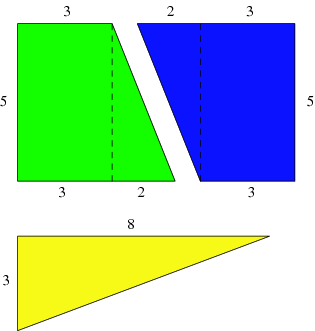In the vast field of MATHEMATICS , one of the fields I like the most is the field of TOPOLOGY . This is the major field where one can see many tactical magics or tricks .
Topology is considered a modern version of geometry with all sorts of spaces and dimensions. According to Eric Weisstein at Wolfram Research , a more precise definition of topology is the "study of spatial objects such as curves, surfaces, the space we call our universe, the space-time of general relativity, fractals, knots, manifolds, phase spaces that are encountered in physics, and symmetry groups like the collection of ways of rotating a top, etc." These topological spaces appear everywhere, making topology one of the great unifying ideas in mathematics.
A Mobius Strip (David Benbennick)
Topology is the study of the mathematical properties that remain the same when you deform an object without tearing a hold in it or gluing sections of it together. The study of topology is a lesson in precision in continuous objects.
Topological objects are independent of their representation or how they are embedded in space-time. Therefore a doughnut (otherwise known as a torus) can be deformed into a coffee cup as can be seen in the image above and the two objects are "topologically equivalent" or homeomorphic. Another example is the set of all of the positions of an hour hand on a clock is topologically equivalent to a circle.
Branches of Topology
*
There are four different branches of topology.
General topology defines basic notions and theorems in topology, such as open and closed sets, continuous functions, neighborhoods and connectedness.
Algebraic topology concerns intrinsic properties of spatial objects that do not change under certain types of transformations. The term "algebraic" is given due to the use of algebraic objects such as groups and rings.
Geometric topology studies manifolds and mappings between them.
Differential topology deals with differentiable functions on differentiable manifolds and is closely related to the field of differential geometry.
Topological geometry -- also known as topology -- is one of the newest of the major branches of mathematics, although its roots go back several hundred years. Before topology, mathematics was often defined as "the science of quantity,," but topology changed that. Distance has little or no meaning in topology, and squares and circles are usually considered the same shape. Topology studies more fundamental mathematical attributes.
Topology is sometimes called "rubber sheet geometry," because topology replaces the rigid plane of classical geometry with a rubber sheet. Squares are considered the same as circles, because squares can be continuously transformed into circles without tearing or breaking. Topologist look for more fundamental distinctions -- like holes. One of the classifications of geometrical objects is genus -- the number of holes in the object. Squares and circles are both genus 0 -- no holes. Donuts and coffee cups are identical, as they are both genus 1. A coffee cup with ho handle, however, would be genus 0.











